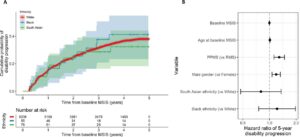Annabelle Coleman, et al. – University College London.

Background: At-home blood sample collection could vastly improve access to and frequency of testing for neurodegeneration markers such as Neurofilament Light (NfL). However, the success of this approach depends on levels of these markers remaining consistent across several days of transit.
This Study: Coleman and colleagues simulated at-home blood sample collection by drawing blood in the clinic via finger pricks, separated blood into plasma and serum, and then either processed samples immediately or placed them on a shaker at room temperature for 3 or 7 days.
- In both plasma and serum, NfL levels remained stable at both time points, supporting the use of at-home testing.
- Glial fibrillary acidic protein (GFAP), another marker of neurodegeneration, declined slightly after 3 days and more so after 7 days; however, the reduced values were correlated with the original values such that empirical determination of a conversion factor could allow for at-home measurements.
- In contrast, total Tau, a marker of Alzheimer’s disease, was not sufficiently stable at the 3-day time point to support at-home testing.
Open Question: Will these observations hold for parcels in actual transit, which are exposed to forces and temperature changes that are more severe than those in the simulated environment?
Bottom Line: A simulation of at home testing suggests that it can be used for NfL and GFAP, but not for Total Tau.




